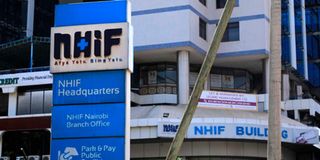Need to review proposed health financing model

To remain a strategic purchaser, NHIF must reimburse both private and public providers equally with rates determined transparently—not varying by hospital.
World Bank , National Health Insurance Fund, NHIF, Health Insurance
The World Bank push to have more private clinics under the National Health Insurance Fund (NHIF) scheme and cover medicines to curb out-of-pocket spending seems fine at face value but the devil is in the detail. The expenditure is going to push more households into poverty.
The proposal to review the Kenyan health financing model to include private players will further expand the risks by commodifying and privatising healthcare provision, including the rising costs and exclusion, and widening inequalities. That undermines the right to health, limiting accessibility and affordability and pushing people into poverty and crushing debt. There is no value for public funds as vast sums go into supporting a private sector that often charges high fees for substandard care.
Information on crucial details is limited. NHIF confirmed that private facilities are reimbursed at higher rates but “rates are based on individual contractual agreements.” This is a far cry from a tightly regulated social insurance programme with private and public providers reimbursed equally and rates determined through a transparent process.
Fundamental human right
With health a fundamental human right, the government is legally obligated to ensure access to quality healthcare for all Kenyans equally. But its pursuit of a de facto privatisation policy in chasing the universal health coverage (UHC) promise will risk that right and expand the role of the private sector while neglecting the public one.
The government agenda in pushing NHIF to spearhead UHC as one of its ‘Big Four Agenda’ was visible when it started increasing the share of (mandatory) pooled resources through a health insurance-based mechanism. This has seen a growth in its membership expenditure with data showing NHIF payment to the private sector skyrocketed.
In 2010-2021, NHIF payouts to the for-profit private healthcare sector rose more than 30-fold, vastly outstripping increases for public facilities (8.8 times). In 2011, some 32 per cent of NHIF spending on benefits went to public facilities and 30 per cent to private for-profits. Just 10 years later, payouts to for-profits had soared to 64 per cent while just 20 per cent went to public facilities.
Huge risks
Involvement of the private sector has huge risks. However, too little attention is paid to the harmful consequences of privatising healthcare, including rising costs, exclusion and widening inequalities. Privatisation is undermining the right to health, limiting accessibility and affordability and pushing people into poverty and crushing debt.
Why would we pay more to private facilities that are for q chosen few while neglecting the public sector, which treats millions of Kenyans who cannot afford private services? Concentrate on public facilities so that all get value for their taxes.
Even with the high expenditure on the private facilities, NHIF seems to have no capacity to verify whether their claims are correct and ensure the quality of care is non-discriminatory. To remain a strategic purchaser, it must reimburse both private and public providers equally with rates determined transparently—not varying by hospital.
Mr Owala is the national coordinator, People’s Health Movement-Kenya. [email protected]. @dan80owalla





